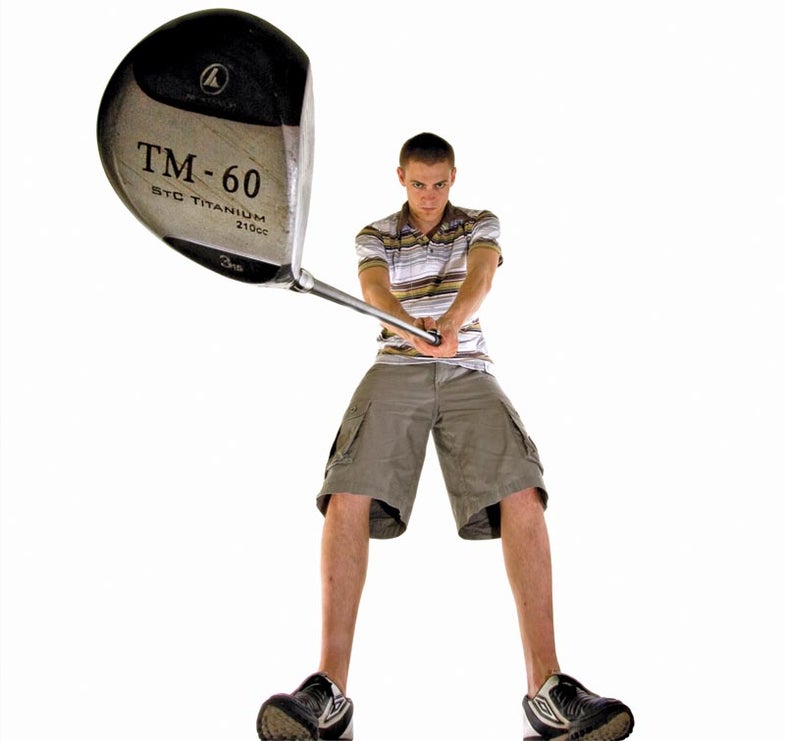How To: Play With Perspective for a Unique Image
An exaggerated angle creates humor in a portrait.

A sure fire technique for great portraits? Look for an unusual point of view or vantage point and put your camera there. When Scott Bourke, a 29-year-old IT administrator from Brisbane, Australia, decided to produce, as he calls it, a “self sportrait,” he picked an unconventional point-of-view: that of a golf ball.
Placing your camera that low for a full-figure portrait, however, introduces challenges relating to composition, focus, and lighting. Let’s consider each:
Composition. The only way to capture the entire golfer and club here was with an ultrawide-angle lens such as Bourke’s 10–22mm f/3.5–4.5 Canon EF-S (16–35mm full-frame equivalent on his Canon EOS 40D). It provided a wide enough angle of view, plenty of depth of field, and also introduced apparent perspective distortion. This let Bourke contrast the overly large golf club head with the relatively small head of the golfer—flouting reality and giving the image a cool, house-of-mirrors twist.
Focus. Because Bourke wanted the entire scene sharp, from foreground to background, it required careful focusing. To achieve it, he focused manually about halfway up the club’s shaft.
Lighting. To nail his evenly bright and brilliantly white background, Bourke experimented with two identical and equally powered shoe-mount flashes, which he placed equidistant from the background wall and behind the subject. He put one high, to light the background from the golfer’s waist up, and the other on the floor, to light the background from the golfer’s waist down. He made their output bright enough to achieve a pure white background, yet dim enough to avoid producing flare that would have softened the edges of his subject.
Follow the below steps for even more tips and tricks:
Step 1
Find a location. You don’t need a seamless backdrop—any room with high ceilings and white walls will do.
Step 2
Get an ultrawide-angle lens. Zoom or prime is fine—make sure it focuses close and offers powerful subject magnification. Bourke’s Canon 10–22mm’s gets to 1:6, for lots of apparent perspective distortion.
Step 3
Get the camera low. Use a tripod that goes to ground-level or a bean-bag platform such as The Pod to prop and aim your camera. (Bourke used a towel and a phone book.)
Step 4
Place the subject high. Bourke gives the appearance of a towering golfer by including both feet, down to the soles of his shoes. He did this by standing on a ladder placed on its side, putting his club head 8 or 10 inches above the camera, underscoring the low camera angle.
Step 5
Evenly light the subject and background. Experiment with lighting output and placement. Bourke lit the background with a shoe-mount flash to each side of him, and a third behind the camera to light his figure and the club.
Final Step
Finish in software. Bourke used Adobe Photoshop CS4 to tweak contrast, lighten the golf club head, crop out the ladder, and bring slightly gray background area to 100% white.